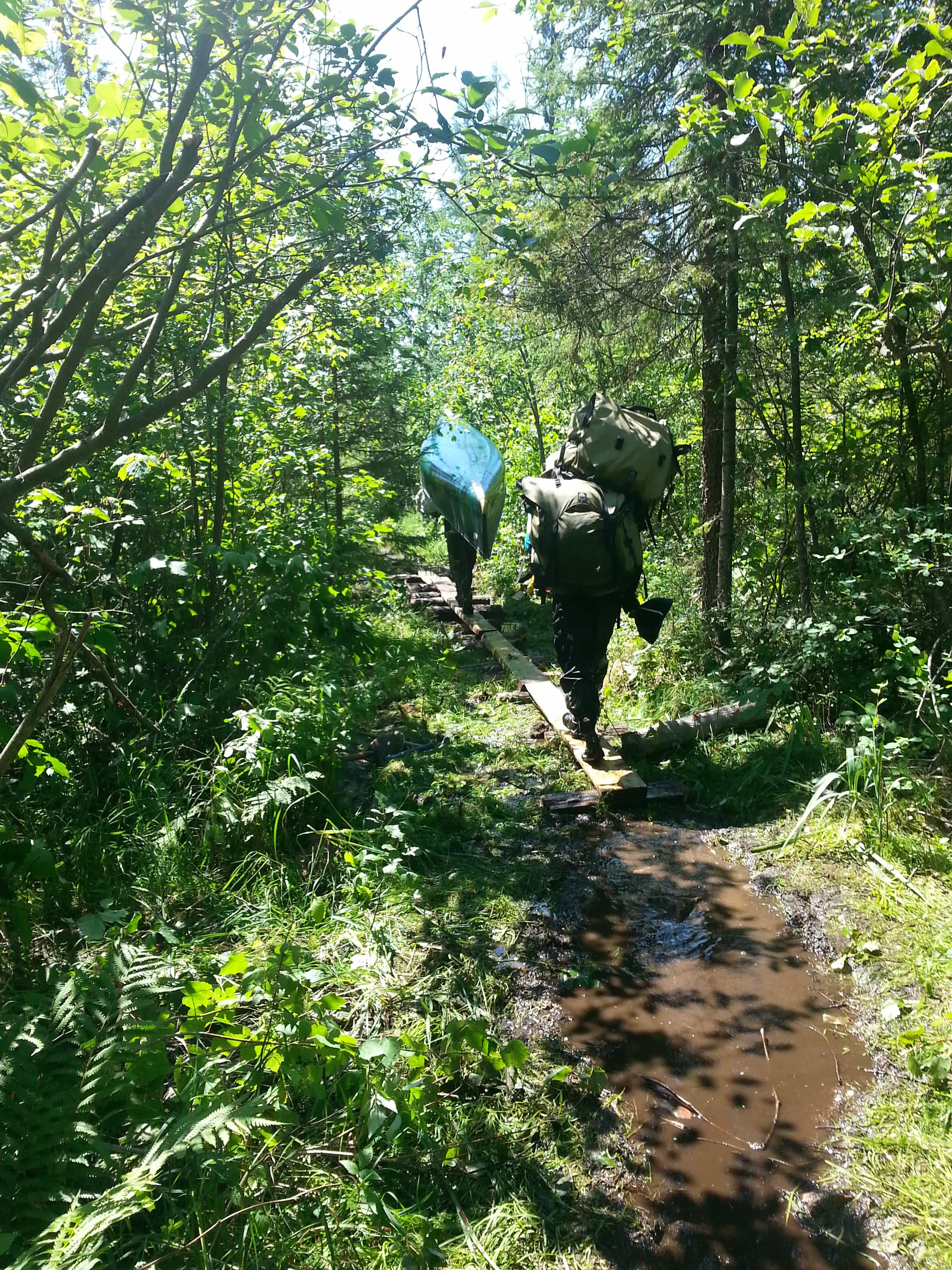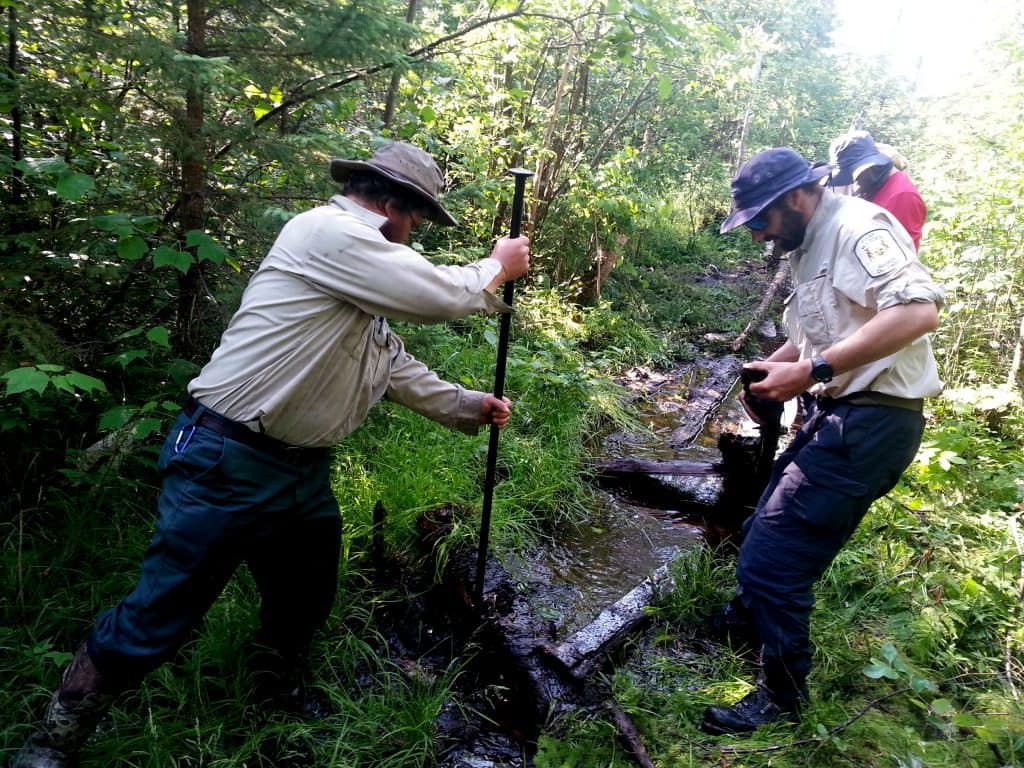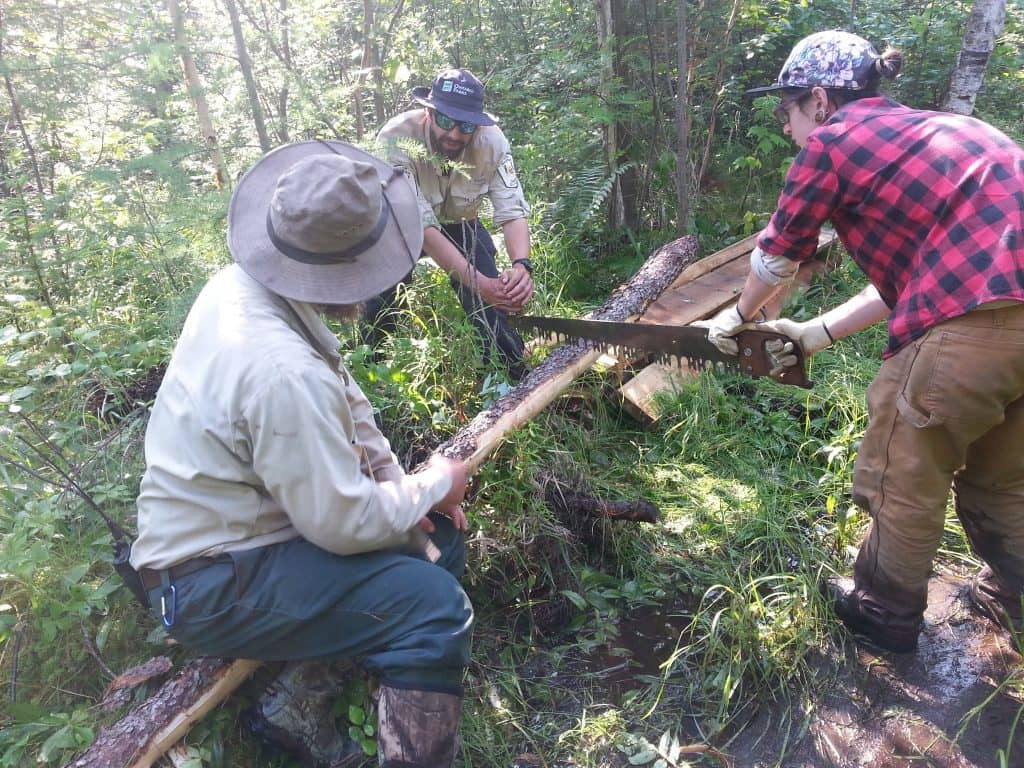Editor’s Note: Whenever possible, Quetico Superior Wilderness News likes to highlight partners committed to protecting or enhancing the wilderness character of the region. The following piece was submitted by the Heart of the Continent Partnership, which brings together agencies and stakeholders on both sides of the Canada-United States border to benefit Quetico Superior region.

This summer, Ontario Provincial Park wardens, the Gunflint Ranger District of the Superior National Forest and members of the Northwoods Volunteer Connection came together to work on a water trail that runs from Kenora to Thunder Bay, Ontario. Called the Path of the Paddle, it’s part of a larger effort to connect three oceans—the Pacific, the Arctic and the Atlantic—via a trans-Canada trail that has been in the works for over a decade. The section these teams visited runs between the Boundary Waters Canoe Area Wilderness and La Verendrye Provincial Park, and is just one example of how agencies in the region hope to come together and benefit the region through the Heart of the Continent Partnership.
The Partnership is a coalition of Canadian and American land managers and stakeholders committed to working on cross-border projects that benefit the economic, cultural and natural health of the lakes, forests and communities on the Ontario/Minnesota border. The coalition recently reaffirmed its intent to work together by resigning the formal agreement between the members and hosting a roundtable in Duluth, MN. The Path of the Paddle maintenance project, planned by the Northwoods Volunteer Connection, provided the perfect place to start. It would benefit paddlers and come just in time for the christening of the larger trans Canada trail of which it is a part.

The Great Trail has over 22,000 km of trail and crosses 13 Canadian provinces and territories. The ribbon cutting for the trail is planned for August 26th at 200 other locations across the country, including Ottawa, ON—all part of Canada’s 150th anniversary celebration. The chance to work on the Path of the Paddle was timely.
By the time Ontario Park Wardens Chris Stromberg and Eric Boyd paddled into LaVerandrye and up the Granite River, work was underway by a team led by Tamer Ibrahim of the Gunflint Ranger District. They tackled a section of trail aptly named “Swamp Portage,” known as boot eater. The intent was to turn the portage into a trail that would be no longer be dreaded by canoeists, and collaboration came easy. All told, the group brushed 132 rods of portage on the Swamp, Granite River and Gneiss Lake portages, installed and repaired 176 feet of plank boardwalk, and rerouted 100 feet of portage trail.


Canoers making their way over the portage were delighted to see the improvements. Some had used the portage before and others had heard of the swamp-like conditions—all were happy to see and try out the new handiwork. The visitors were greeted by teams from both the Superior National Forest and Ontario Parks, which gave them a brief education about the required permits and fishing licenses needed for traveling or camping along the border. The benefits of a collaborative ranger presence were obvious to the rangers, and for the Park Wardens it was great to work alongside of the Forest Service and see how they maintain and improve their trails.

This project was made possible by funds from the Lloyd K. Johnson Foundation, the NWSA National Forest System Trail Stewardship Grant and the US Forest HOCP is hoping to learn from organizations like the Northwoods Volunteer Connection that are working in the border lakes region. We encourage becoming stewards of the places we love and connecting people to our public lands, not only with sweat and hard work in the backcountry, but within the hearts and minds of the people that work, live and visit the Heart of the Continent. Learn more about the partnership here. http://www.heartofthecontinent.org/
by Chris Stromberg, Coordinator
Heart of the Continent Partnership

